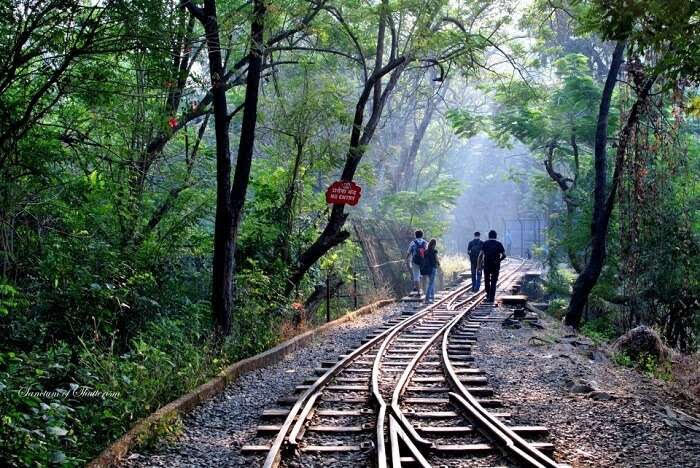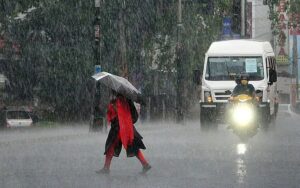A Guide to Mumbai’s Hidden Gems to Explore

A Guide to Mumbai’s Hidden Gems to Explore
Sanjay Gandhi National Park, sprawling over 87 square kilometres in Mumbai, is a haven for endangered flora and fauna.
18th May 2024
1. Banganga Tank:
Banganga Tank, Teen Batti, Mumbai is nestled at the northern end of Back Bay. Banganga Tank in Mumbai’s Malabar Hill is a hidden gem steeped in legend and history. According to the ancient Hindu epic Ramayana, it’s believed that Lord Rama created the freshwater tributary of the Ganga River by shooting an arrow into the ground, hence the name Banganga.
The tank and adjacent Walkeshwar temple were built in 1127 by a minister of the Hindu Silhara dynasty, gradually evolving into a pilgrimage site with various temples and rest houses. Banganga Tank offers visitors a serene retreat amidst Mumbai’s bustling urban landscape, providing a glimpse into the city’s rich past and cultural heritage.
2. Sanjay Gandhi National Park:
Sanjay Gandhi National Park, sprawling over 87 square kilometres in Mumbai, is a haven for endangered flora and fauna. Its forested areas boast over 1,000 plant species, while its diverse ecosystem supports 251 species of migratory and resident birds, 5,000 species of insects, and 40 mammal species. Additionally, the park is home to 38 reptile species, 9 amphibian species, 150 butterfly species, and a variety of fish.
Within this sanctuary lie the ancient Kanheri caves, carved by monks into the basaltic cliffs over 2,400 years ago. The park’s remarkable biodiversity draws over 2 million visitors annually, offering a unique opportunity to explore nature and history in the heart of Mumbai. Established in 1969, the park’s headquarters are located in Borivali, serving as a vital green lung amid the urban sprawl of the city.
Timings: From 09:30 AM to 05:30 PM, open every day (except Mondays).
Rate: Adults (Above 12 years): ₹ 124 and Kids (3 to 12 years): ₹ 50
3. Madh Island:
Nestled along the northwestern coast of Mumbai, Madh Island stands as a picturesque beach-peninsula. It holds a special place as a stronghold of the Koli fishermen community, believed to be Mumbai’s original inhabitants. This enclave is cherished for its untouched beaches and thriving mangroves, a rarity amidst the city’s bustling landscape.
Madh Island’s pristine beauty has not gone unnoticed in the world of cinema. Throughout the 1990s, it served as a favoured location for numerous Bollywood movies, including iconic films like “Baazigar,” “Khalnayak,” and “Shootout at Wadala.”
Accessing this tranquil haven is an adventure in itself. Travellers can opt for a scenic jetty ride from Versova jetty or embark on a longer but equally thrilling road trip through Malad. Whether you seek solace in nature’s embrace or wish to explore the cinematic history woven into its sands, Madh Island promises a memorable experience for all who visit.
4. Worli Sea Face:
Worli Seaface stands as a prominent waterfront promenade nestled along the Arabian Sea, earning its place as one of Mumbai’s cherished destinations. Situated in Worli, this vibrant area is renowned for its crashing waves and stunning vistas, drawing locals and tourists alike to its shores.
Stretching from Worli Fort to Prabhadevi, it offers panoramic views of the azure sea, with the iconic Haji Ali Dargah looming in the distance. Among its highlights are the historic Worli Fort, the iconic Bandra-Worli Sea Link and the revered Haji Ali Dargah.
Yet, beyond its famed landmarks, Worli Seaface beckons with its vibrant culinary scene, boasting eateries that cater to all tastes well into the early hours. A hotspot for Mumbai tourism, it is also home to Palais Royale, one of India’s tallest buildings and a symbol of opulence.
Renowned as one of Mumbai’s most coveted residential areas, Worli Seaface captivates visitors with its blend of natural beauty, architectural splendour and vibrant culture, making it an unforgettable destination for all who visit.
5. Mahakali Caves:
Mahakali Caves Rd, Sunder Nagar, Andheri East are a group of 19 rock-cut monuments built between 1st century BCE and 6th century CE. Caves are carved out of a solid black basalt rock. Mahakali Caves comprise a total of nineteen rock-cut monuments, built between the 1st and 6th centuries. The main cave consists of Buddha figures and stupas and there are several Buddha idols carved on the rocks too. These solid basalt caves are a favourite place for history lovers and archaeologists.
Timings: 9am to 6 pm every day
6. Aarey Colony: Aarey Milk Colony, nestled within the expansive Sanjay Gandhi National Park (SGNP), serves as a vital green buffer between the park and Mumbai’s urban sprawl. Spanning over 2000 acres, this mixed moist deciduous forest is one of the city’s last remaining green spaces. Recognising its ecological significance, the Maharashtra government declared a portion of the colony, approximately 600 acres, as a reserved forest in September 2020.
Established in 1949 in Goregaon (East), Aarey Colony aimed to modernise dairy processing and marketing in Mumbai. Today, it not only fulfils this purpose but also boasts a rich biodiversity. Home to diverse wildlife, including at least 86 tree species and 22 bird species, Aarey Colony supports a thriving ecosystem.
Recent reports underscore its importance as a habitat for various insects, butterflies and birds, with approximately 290 wildlife species documented within its borders. Among these inhabitants are five species listed in the International Union for Conservation of Nature (IUCN), highlighting Aarey’s role in wildlife conservation.
From leopards to the elusive Rusty-spotted cat, Sambar deer, Alexandrine Parakeet and Red-wattled Lapwing, Aarey Milk Colony stands as a testament to Mumbai’s natural heritage and the importance of preserving urban green spaces for future generations.







